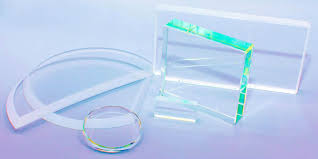Window Glass in Optoelectronics: Fix Clarity & Protection Issues in Optical Devices

If your optical instruments, sensors, or imaging systems are delivering lower performance, the issue might not be the electronics or software — it could be the protective glass in front of your optics. In many high-precision systems, even minor distortions in glass layers can lead to light scattering, reflection loss, or inaccurate readings. This is where advanced window glass designed for the optoelectronic industry becomes essential.
In this article, I’ll explain how the right optical window glass enhances transmission, protects sensors from environmental damage, and ensures accurate optical performance for applications in imaging, sensing, and laser systems.
Why Standard Glass Doesn’t Work in Optoelectronics
Regular glass used in buildings or consumer goods is not optimized for light-sensitive applications. When used in optical or electronic devices, it creates performance issues such as:
-
Light distortion: Uneven surfaces or impurities affect beam quality.
-
Reduced transmission: Ordinary glass reflects part of the light, lowering signal strength.
-
Temperature instability: Changes in heat or pressure cause warping or expansion.
-
Poor durability: Easily scratched or damaged during industrial use.
In the optoelectronic sector — where precision and consistency matter — these flaws can cause serious problems, including lower sensor accuracy, calibration drift, and reduced product lifespan.
What Makes Optical Window Glass Different
Optical-grade window glass is engineered to provide maximum light transmission, surface flatness, and environmental protection without distorting the light path. It acts as a transparent barrier between sensitive internal components and external environmental factors such as dust, moisture, and temperature fluctuations.
Here’s what makes it superior:
-
High optical clarity: Transmits over 90–95% of incident light with minimal loss.
-
Scratch and impact resistance: Perfect for rugged industrial and outdoor environments.
-
Thermal stability: Maintains optical properties even in extreme temperatures.
-
Custom coating options: Anti-reflective, UV-blocking, or infrared (IR) coatings enhance specific application performance.
By ensuring precise light control and protection, this specialized glass helps optical and electronic systems achieve long-term accuracy and reliability.
Applications of Window Glass in the Optoelectronic Industry
The role of optical window glass extends across multiple high-tech applications, including:
-
Laser Systems: Protects laser cavities from contamination while maintaining beam precision.
-
Camera Modules: Used in high-end imaging lenses and surveillance systems.
-
Spectrometers: Ensures accurate wavelength detection with minimal distortion.
-
Sensor Enclosures: Shields light or infrared sensors without affecting signal detection.
-
Display and Projection Systems: Maintains color fidelity and brightness.
Because of its durability and optical efficiency, window glass has become a critical material in industries such as semiconductor manufacturing, aerospace, and biomedical imaging.
How Material and Coating Affect Optical Performance
Not all window glass is made the same. Manufacturers choose materials and coatings based on the wavelength, environment, and function of the device.
| Material Type | Key Benefit | Ideal Use Case |
|---|---|---|
| Fused Silica | High UV and IR transmission | Laser optics, UV sensors |
| Borosilicate Glass | Thermal stability | Imaging and projection |
| Sapphire Glass | Scratch resistance | Harsh industrial environments |
| Optical Quartz | Minimal thermal expansion | Precision instruments |
Anti-reflective coatings can further reduce light loss and glare, while hydrophobic coatings protect against moisture and dust. Choosing the right combination ensures performance longevity and accuracy in sensitive systems.
Why Optical Design Engineers Prefer Specialized Window Glass
For engineers working in the optoelectronic industry, optical window glass isn’t just a protective layer — it’s part of the performance equation. Its quality affects the system’s light throughput, alignment precision, and calibration consistency.
Choosing the right material allows designers to:
-
Improve light efficiency by reducing reflection losses.
-
Protect delicate internal sensors without altering data accuracy.
-
Maintain device stability in changing environments.
-
Optimize overall energy consumption and reduce heat buildup.
With technology evolving toward smaller, more integrated optical devices, custom-designed window glass plays a growing role in enhancing both protection and precision.
Conclusion
When your equipment demands accurate light transmission, temperature stability, and durability, the right optical glass can make all the difference. The window glass solutions built for the optoelectronic industry are engineered to meet these demands — improving both system reliability and optical output.
If your business deals with sensors, cameras, or laser-based devices, upgrading your optical components can prevent performance loss and extend device life. Visit window glass at ARVROptical to explore precision-grade glass built for your industry’s toughest visual requirements.
- Art
- Causes
- Crafts
- Dance
- Drinks
- Film
- Fitness
- Food
- Giochi
- Gardening
- Health
- Home
- Literature
- Music
- Networking
- Altre informazioni
- Party
- Religion
- Shopping
- Sports
- Theater
- Wellness


